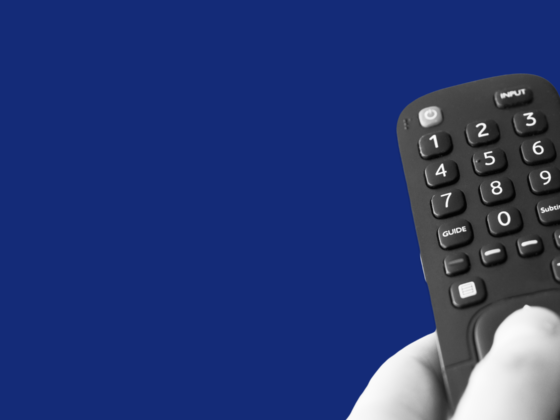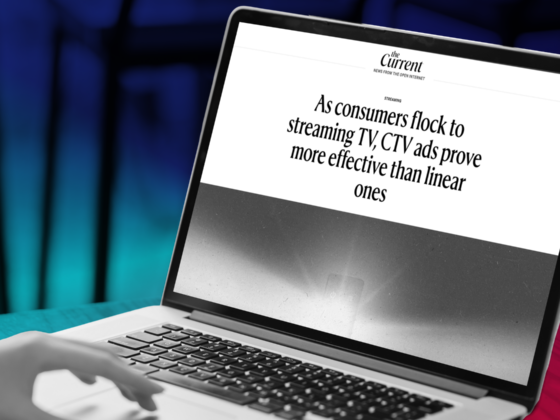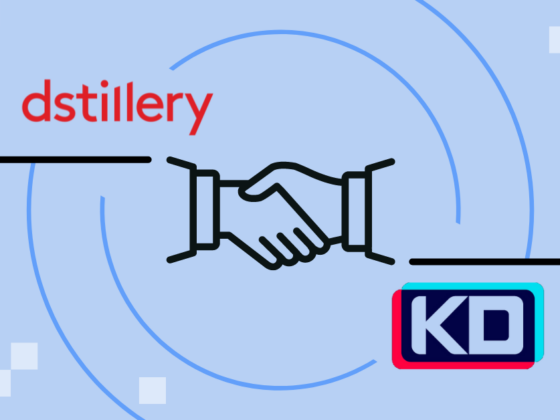Connected TV Best Practices
The times marketers could debate the benefits of Connected TV are coming to an end. CTV advertising is quickly becoming an integral part of the advertising industry. Those who wait will only find themselves behind as they attempt to catch up to the latest trends. Gone are the days when linear TV, or traditional TV ads reign supreme. The tailored videos that can be provided on a CTV device (internet-connected device, smart TV, or gaming console) create better metrics and improve overall campaign performance. Linear TV can only serve ads to a general mass population while Connected TV provides tailored content for the individual who is watching at that exact moment.
Before diving into the world of CTV ads, Connected TV best practices must be followed in order to garner the best results. Marketers cannot simply use the same ads they would run on a traditional cable program. If they choose to do that, they will be wasting their ad dollars, time, and see minimal results. With CTV creative best practices, marketers typically follow two production plays: Direct Response and/or Branding.
Direct Response
Direct response requires a four-part process to be successful:
✓ Determine a Goal.
The goal will determine the type of direct response you desire. This is how you are going to encourage users to your site.
✓ Get to the point. Fast.
Rather than building up to the main USP like a traditional DR TV ad, a CTV direct response ad needs to hook the viewer’s attention fast and finish with a strong, captivating CTA.
✓ Use persistent URLs.
Persistent URLs should be visible throughout the entire TV ad. This is the best way to say your brand name and direct customers to complete an action, without impacting the look and feel of your new ad.
✓ State a strong Call-To-Action.
Your video message and audio must be powerful and drive the user to complete a specific action to learn more. Past Connected TV examples include the audio saying “Visit us at this URL” or “Redeem your free shipping at XXX.com”.
These creative best practices steps will help drive positive metrics for your CTV DR ad.
Branding
Aside from direct response, you can also implement the branding play. These Connected TV ad examples only involve three steps.
✓ Determine a Goal.
Create a clear and informative branding message to invoke curiosity in those who may not be aware of your brand. You are trying to grab their attention and inform them about who you are as a company.
✓ Determine what it is you want people to know about your brand.
You need to describe what your brand should be known for by new viewers. Focus on only 1 or 2 reasons because most people tend to forget after 3 USPs. A few Connected TV advertising examples you can remind people to remember your brand are quality ingredients, ethically made, low prices, or whatever main points that encompass your brand.
✓ End Card.
The end card is simple but important. The last three seconds of your ad will showcase your brand name, URL, and/or tagline. This is the last thing your target audience will see, so the information should be clear and easy to read.
In general, rely on Connected TV specs to create the best ads possible. Focus on grabbing your viewer’s attention within six seconds and make sure you explain your brand early in the ad. Audio is just as important as the visual aspects of the commercial. An end card can be used in every Connected TV ad because it provides your brand name and URL in the last three seconds of the video.
Connected TV Vs OTT
When it comes to understanding Connected TV advertising, many still use Connected TV vs OTT interchangeably. While related, it is important to know their differences. The Connected TV definition is a device that is connected to the internet used to stream OTT content. This can be Roku, Firestick, Apple TV, smart TV, or even a gaming console.
On the other hand, OTT stands for Over-The-Top and is defined as the content that is played through the CTV. OTT content can be shows, movies, and any type of entertainment that is streamed online via the Internet.
The reason many confuse OTT and CTV when they first learn the terms is because of how dependent they are on one another. OTT programs can only be played on a CTV device. A CTV device can play linear TV (also known as traditional cable TV), should the user not be part of the nation’s group of cord-cutters.
How Does Connected TV Advertising Work?
Understanding the question of “how does Connected TV advertising work?” is just as important as selecting the best Connected TV advertising platforms. Connected advertising works by utilizing cross-device technologies rather than using cookies. This means Connected TV companies understand a user’s preference without tracking all of their data. This works by using the user’s profile to log what shows and movies a user watches regularly.
It’s important to utilize the best practices possible when running ads on Connected TV platforms. Just like search engine optimization, social media marketing, or any other digital marketing tactic, best practices can influence better results.
Several Connected TV advertising companies are in operation today. Each has its own relationships and Connected TV platforms they utilize to run campaigns. Depending on what shows and entertainment your audience regularly watches, some platforms may be better suited for your campaign than others. Typically, AI machines will optimize towards the best-performing channels and segments. CTV advertising companies are proud of their relationships, so you can usually learn about what partnerships they can utilize during your campaign.
How To Buy OTT Advertising
OTT advertising is played directly during a show or movie that is streamed on a CTV device. OTT advertising companies make it incredibly easy to purchase space programmatically to run ads, which allows brands to create a better connection with their audience. For example, now that NBC’s Peacock exclusively streams The Office and Parks and Rec, any brand that connects with fans of these shows will benefit from streaming CTV ads on Peacock.
There are several benefits of OTT advertising outside of building strong relationships. OTT ads help extend a brand’s reach. If a user likes one type of show or movie, it is easier to determine other shows or movies they will enjoy. Brands can reach multiple users across a variety of shows and movies. Additionally, OTT advertisements help brands relay their message multiple times. With the average person seeing up to 10,000 advertisements a day, it is helpful to have as much repetition as possible to help remain top of mind for products and/or services.
The best OTT advertising platforms will vary from brand to brand. This is largely due to the audience on each platform. Currently, the largest OTT platforms available on the market include Hulu, Amazon Prime, HBO Now, FOX, CNN, and Starzz.
Connected TV Marketing
When anyone looks at Connected TV advertising statistics, it’s hard to see anything but the future of digital advertising. This is the fastest-growing digital marketing tactic available in the industry today, and it is not predicted to slow down anytime soon. By looking at the Connected TV advertising market size, one will find that Hulu and Roku have acquired nearly half of all the revenues.
In 2020, the Connected TV marketing ad spend reached over $8 billion and predictions for 2021 say we will reach nearly $12 billion or more by the end of the year. By 2024, the Connected TV statistics predictions show $18 billion.
The reason CTV ads are growing so quickly in popularity is the results they deliver either instantly and incrementally. With Connected TV targeting, the advertising industry has been able to create campaigns that directly target consumers in their households. Some Connected TV ads even target one device to show ads to certain members of the household and use another device to target other members.
When comparing the results of Connected TV vs linear TV, it becomes even easier to see the future than lies ahead. In 2018, more than 33 million individuals in the United States cut their cable subscriptions. This led to having more than 60% of the nation with at least one streaming service in 2019. Over 80% of Americans prefer streaming over cable TV, which has significantly increased Connected TV viewership.
Over 50 million households are cord-cutting and switching to streaming services. This means advertisers are missing out on touching over 50 million households with their messaging. The future of advertising lies in Connected TV advertising. Between the ability to target specific devices to the OTT ads that can also be run through the CTV device, the advertising industry is changing.
Those who want to stay ahead of the competition and build a deeper connection with their target audience need to be testing Connected TV marketing campaigns. The sooner they do, the faster they will realize how important cross-device technology tracking is for their future campaigns.


















